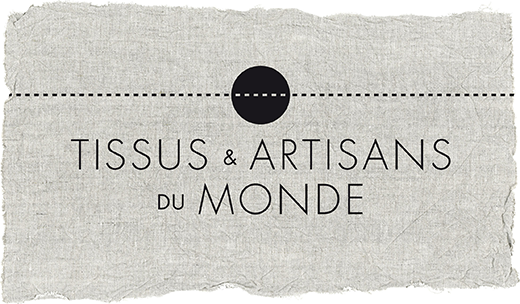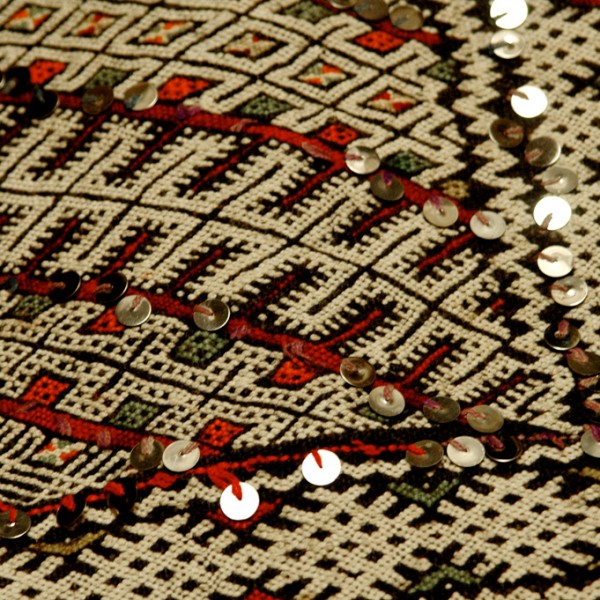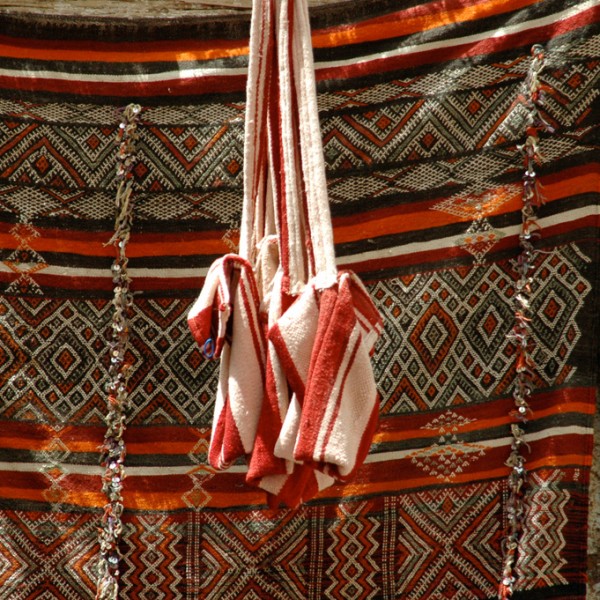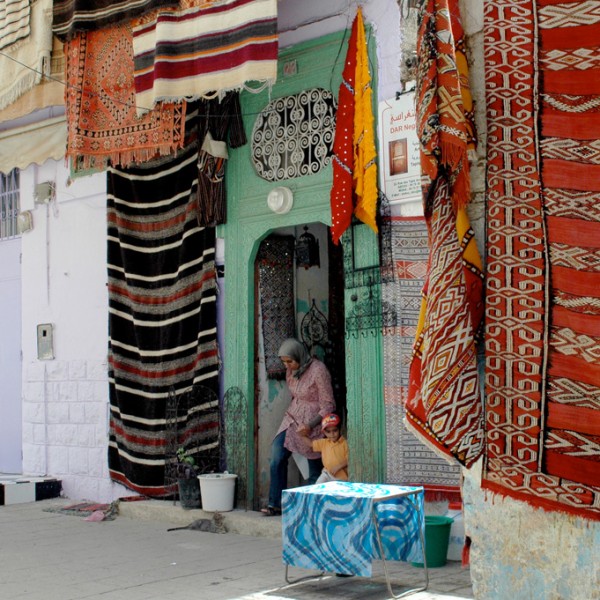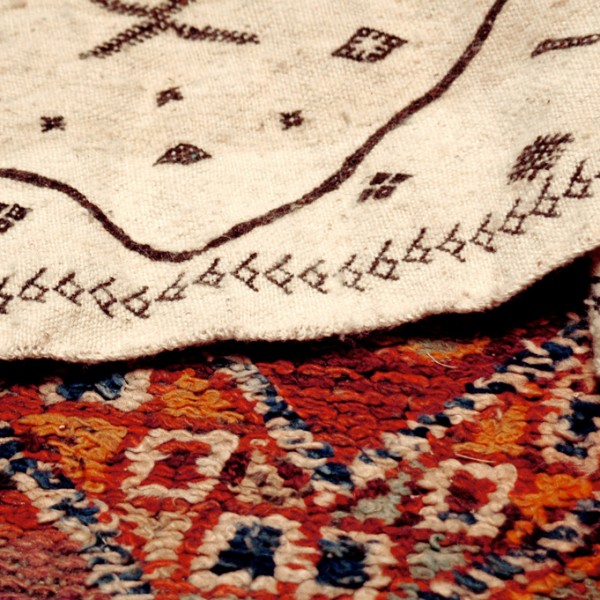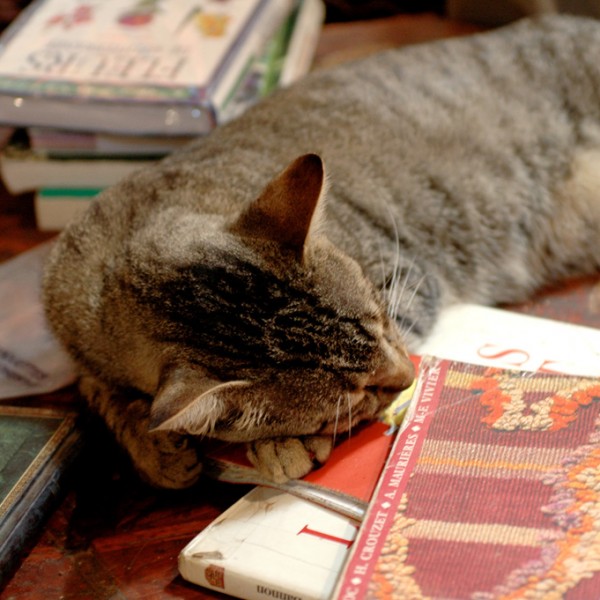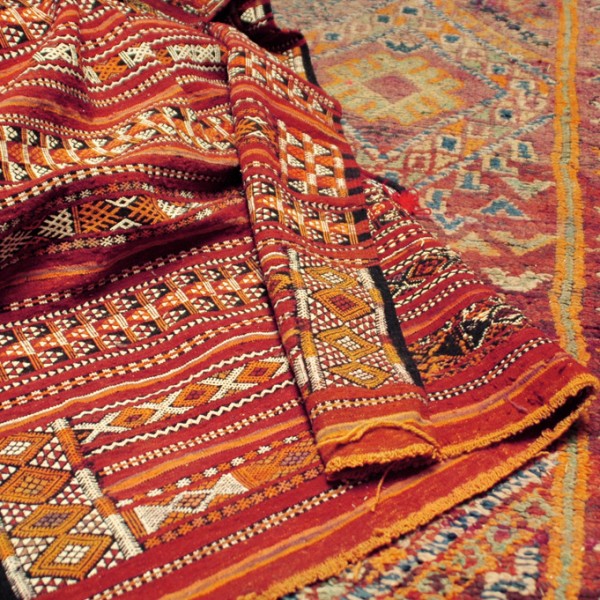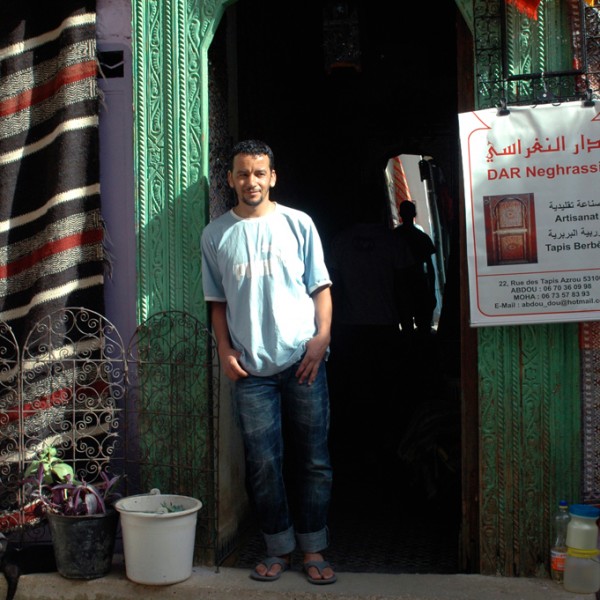Dar Neghrassi is a treasure cavern in the historical center of the city of Azrou, with piles of carpets and plenty of textile antiques in every room, books on traditional Berber carpets and a couple of cats wandering around peacefully. This is Abdou’s kingdom. Being more a passionate antique dealer than just any carpet seller, he has the talent to recognize from which tribe a piece of fabric comes from, assessing the origin, age and quality of a carpet or a handira, a cape called by Berbers “tahdounte “. In this beautiful old mansion, lit by soft light coming down from the canopy, Abdou receives friends, customers and tourists visiting the Middle Atlas area, looking for some beautiful pieces to take back home.
Former law student, he has finally returned to his homeland in Azrou to work with his father. They initially started their activities in the souk markets, but now Abdou is holding their store Dar Neghrassi, while his father goes for the textile treasures hunting in the different Berber tribes living in the area. As a sale, exchange and store goods platform, the Neghrassi house is more than just a bazaar, it’s almost a museum.
To support and perpetuate these traditional know-how, Abdou has developed a longstanding relationship with several weavers from the surrounding area, such as the weaving women from the cooperative of the nearby village of Ain Leuh. To help these women make a decent income, he encourages them to develop new designs, such as simplified rugs using the Berber typical patterns from the Beni M’Guild tribe located close by in Ifrane, requiring less time to be produced but keeping all the original qualities of the Berber carpets: authentic wool yarns dyed by natural pigments.
I have spent a few hours in his company and he has opened me to a world of subtilities. Like showing me the complexity of an old piece compared to a recent one, feeling the beauty of natural wool as opposed to acrylic yarn. I have seen how madder plants can give a deep red color, henna provides variations of orange and brown tones, and indigo leaves produce a deep blue color. I was also taught how to appreciate the differences between the Beni M’Guild tribe’s and the Beni Ouarain’s products.
It was great to hear him say that you do not find the same “spirit” in a rug made to be sold as opposed to a one woven to be kept. Abdou shared the idea that the loom is the receptacle of the Berber soul, a way to convey emotions of this culture in its weavings by carrying symbols of their families and heritage.
